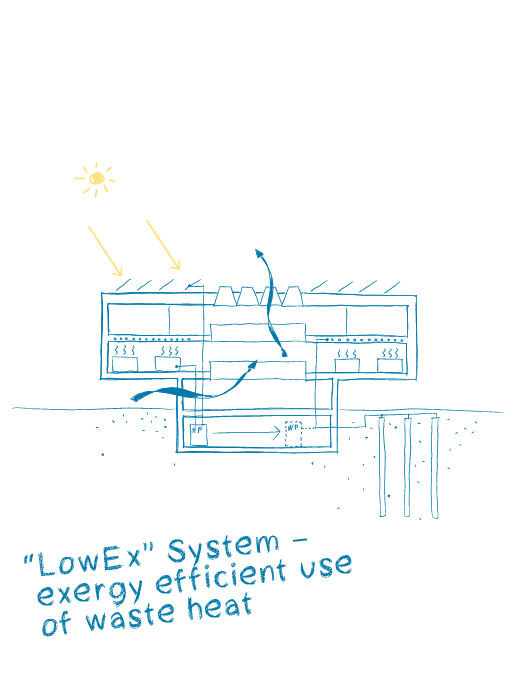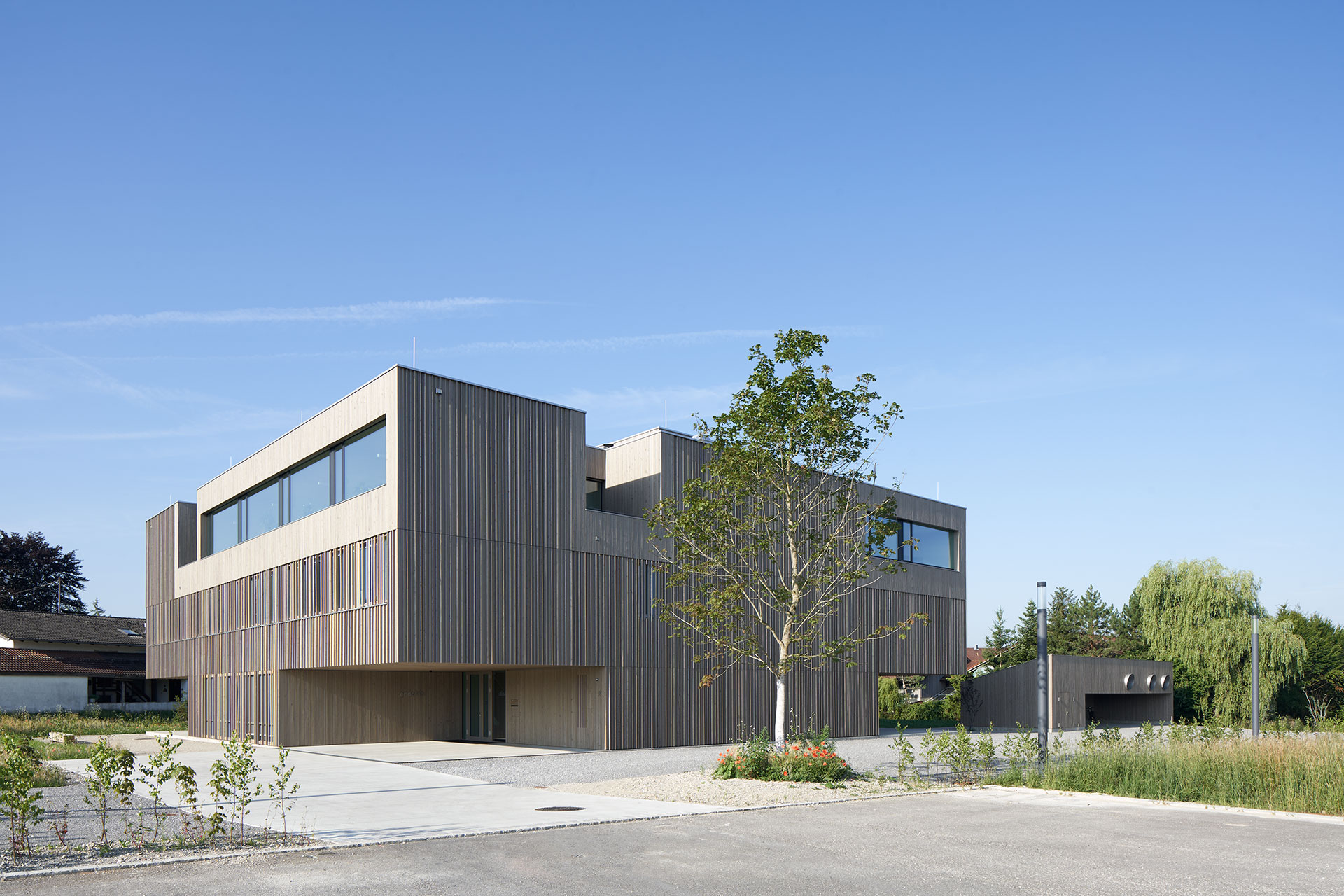New Head Office and Lab Building, Riedering, Germany


The company EndoLab - a test lab or medical implants - moved its headquarters from Thansau to Riedering near Rosenheim and built a new office and laboratory building for this new location. The task in the first planning phase was the development of a location-specific energy concept as well as climate concepts adapted to the building uses. A number of main uses are defined within the building:
These are laboratory rooms for the durability test, an employee cafeteria with a kitchenette on the ground floor, the office rooms and a seminar room. An open meeting area is located in the central atrium, which is flooded with skylights and extends over the first to third floors. The skylights also serve as smoke / heat exhaust and can also be used for normal ventilation of the atrium. The supply air then flows in from the ground floor through an electrically controlled lamella cassette.
Unusually for a laboratory building, large parts of the building use purely natural window ventilation.
An external, static sun protection system offers summer thermal protection based on robust “Low-Tec”: the first and second floors feature vertical wooden slats which characterize the appearance of the façade.
Large amounts of waste heat accumulate throughout the year in the thermally highly stressed laboratory and simulator rooms, the majority of which is collected via a hydraulic circuit. This heat had to be used for building heating. A "LowEx" concept approach was the ideal solution for this; the system is thus thermodynamically optimized, i.e. coordinated with the temperature level of the waste heat.
By integrating thermally activated ceilings, the building can be heated on a room-specific basis as well as cooled if required. The central energetic component is a geothermal field consisting of 2,400 running m boreholes, which serves as a seasonal buffer for the building's waste heat. Free re-cooling regenerates the soil thermally if necessary and ensures the permanent system function. In this way, the geothermal field can also be used for free, direct building cooling. A reversible heat pump can be switched on temporarily to enable active heating in cold winter periods and active cooling in long summer periods.
A 55 kWp PV system rounds off the energy concept regeneratively and enables CO2 and climate-neutral building operation.
In the first year of use, there are only very short operating times for the heat pump. This means that direct, sole heating using the laboratory waste heat is usually sufficient. The same applies to the cooling mode: A predominantly free cooling via the geothermal field is able to cover the cooling energy requirement of the building.




